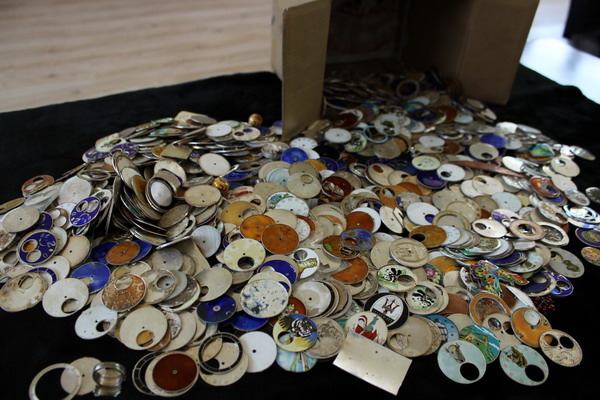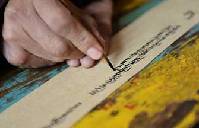 |
|
Xiong Songtao and his team achieve mastery of dial making by producing thousands of designs, including some failures along the way. Photo by Wang Kaihao / China Daily |
"But struggling in society is not easy," he says. "When I made several articles by myself for the first time, I felt the responsibility of inheriting the family trade."
|
|
 |
"These are only a small percentage of my failures," he laughs.
"I should have kept them all and opened a museum one day. In dial making, one tiny inaccuracy in any step will result in a disaster in the end."
Ancient China's cloisonne enamels require 30 steps to make, but an enamel dial requires at least 53 steps over two weeks. A 1-mm-thick dial has to be burned in furnaces more than 10 times. More than 70 artisans work in his studio.
There are only five places, including Xiong's studio, that make enamel dials nationwide, according to Wang Mengjin, vice-chairman of the council leading China Horologe Association. Enamel dials are an essential component of high-end watches, but they only reappeared in China in the past decade. Artisans in the Forbidden City made pocket watches with enamel dials in the Qing Dynasty.
Xiong proudly says several top Swiss luxury brands have ordered dials from him, but he refuses to name them due to confidentiality agreements.
"To make dials recognized by the Swiss, I need do better than my European counterparts. Being equal to them is not enough to attract attention," he explains.
"I cannot cut corners in costs. I have to use jade, turquoise and other kinds of fine materials as dyestuff."
Xiong says learning to make the dials has led to him experimenting with new styles of cloisonne enamel pieces with finer details, more rigid processes and better materials than traditional methods. He believes these items are just as good as the old treasures cherished by the royals. Several small incense burners he made, priced at over 100,000 yuan ($16,000), sold immediately.
|
|
|
|
|
|
|
|
